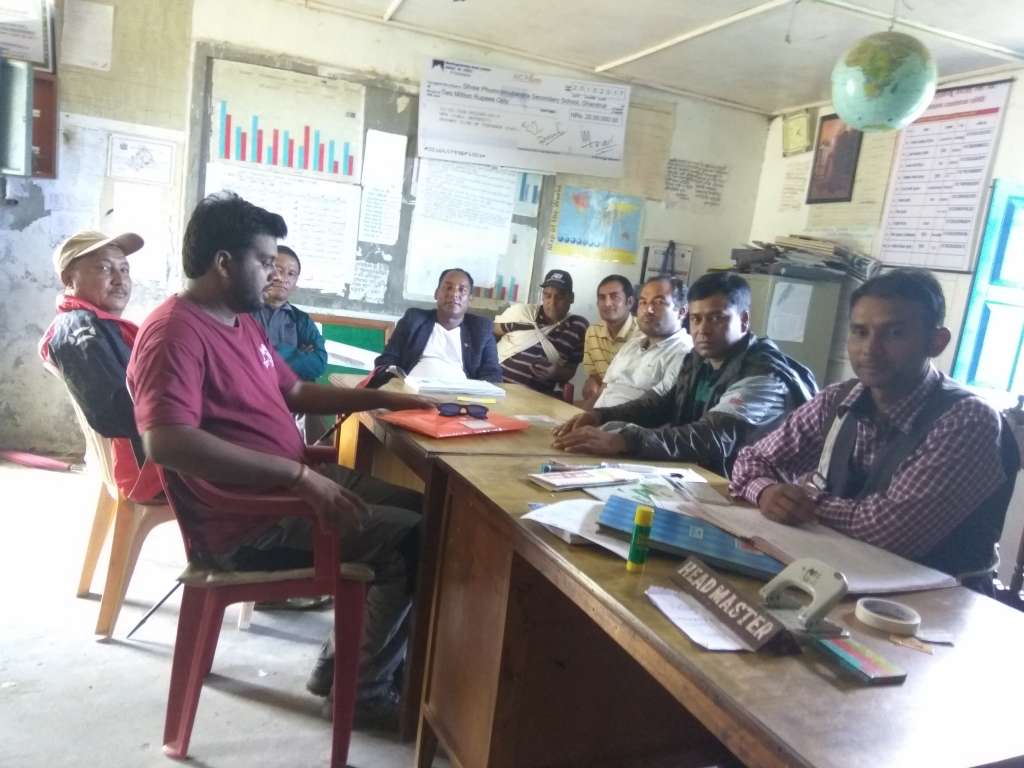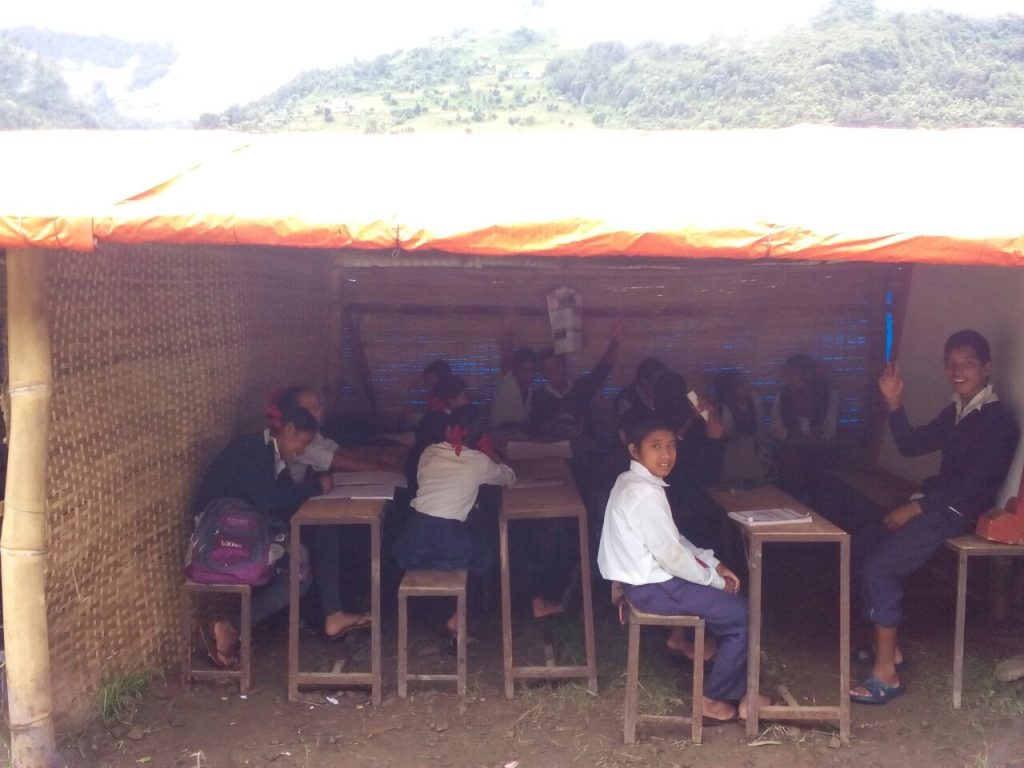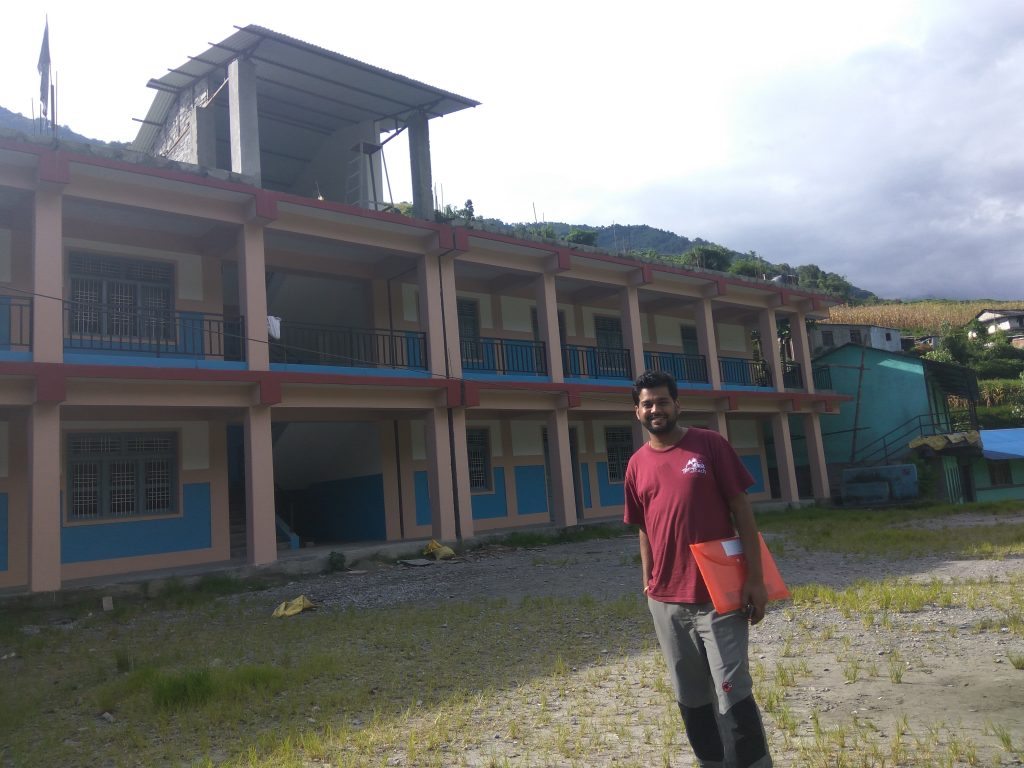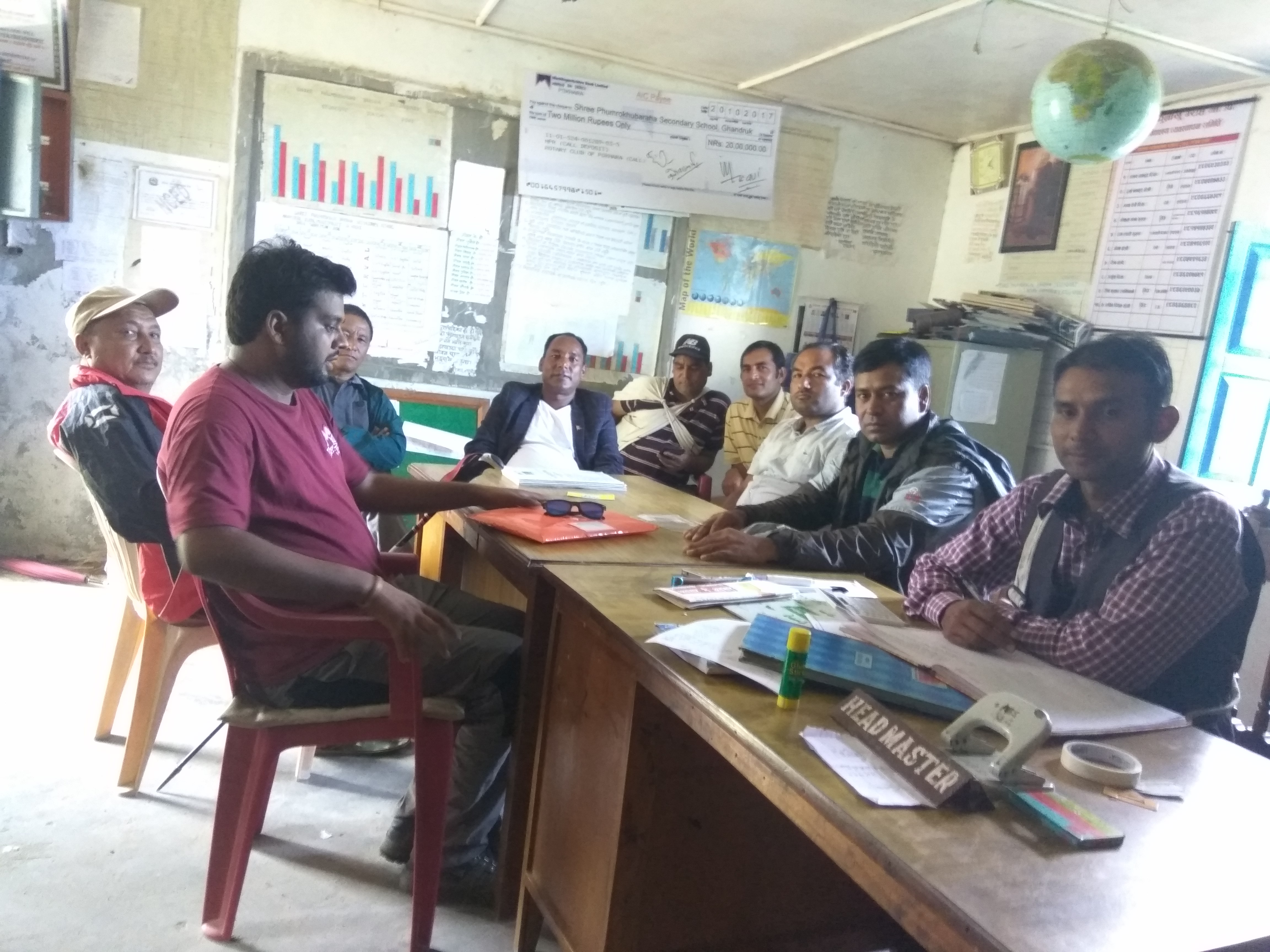Rebuilding Kliyu
Guest post by Ashley Mathews from Trek to Teach

On April 25th, 2019, the earth once again moved under Nepal. A sense of déjà vu rippled through Kathmandu Valley in the form of three large tremors, reminding the country of the panic experienced four years prior. Unlike the earthquake in 2015, which caused “approximately 9,000 deaths, 23,000 injuries, and the destruction of 600,000 family homes,” this year’s quake caused no major structural damages, although likely left remnants of fear.
While several worldwide natural disasters have funneled through our news feeds in the last year alone, the sheer loss of life from the 7.8 magnitude 2015 earthquake places “second in the deadliest earthquakes in the last ten years worldwide”. It’s no wonder that the effects of this disaster can still be seen everywhere from main attractions such as Kathmandu’s Durbar Square to small local schools in the Annapurna region such as Kliyu’s Shree Phumrokhun Baraha Secondary School.
Relief organizations flooded Nepal to provide support in the form of search and rescue, food distribution, and makeshift housing materials. While this was happening, we at Trek to Teach started to rethink how to expand our current mission in order to include safety alongside with education.
Trek to Teach is partnered with five local schools dotted along the Annapurna trekking route and provides English teachers in order to expand educational opportunities for students in this region. Before the earthquake, we had a number of small infrastructure projects going such as installing drinking fountains, doors, glass windows and electrical wiring to improve the overall educational experience for students and teachers. Once the earthquake happened, we began brainstorming ways to create preventative safety measures for students and teachers alike.
So far, we have completed four out of five safety-based infrastructure projects for our schools and we’re coincidentally beginning our fifth around the anniversary of the devastating 2015 earthquake. According to BBC News, over 25,000 classrooms were destroyed in 2015 and the village of Kliyu, where one of our partner schools is located, visibly falls into this group. Kliyu’s school and surrounding area were dramatically changed overnight as the students’ play area was transformed into a pile of large boulders from their fallen school building. What was once a safe, inviting educational beacon in the community was transformed into something barely recognizable that was unsafe for teachers and students, yet the community had nowhere else to educate their students.

Kliyu’s school has been a construction site for far too long. We at Trek to Teach are thrilled to have partnered with MyTEFL to complete a safe and sustainable multipurpose hall that will used for both classes and community meetings. However, even having the most extensive preparation process in place, the procedure of getting the project approved by the Nepali government has been extensive and has tested the patience of our local Trek to Teach team in Kathmandu. Our president, Manish Chaudhary explained, “We created the proposal, submitted it to the Social Welfare Council and it essentially sat in a queue of other projects from various NGO’s.” Our file was passed around from one department to another to guarantee that we had met necessary construction guidelines. It took months for the project to be approved and this was after the many steps taken to get local approvals before heading to the Social Welfare Council (SWC). Once the SWC accepted our proposal, our team started taking many long trips from Kathmandu to Kliyu in order to meet with the school leaders to finalize the project. This trip includes an eight-hour bus ride to the second-largest Nepali city, Pokhara, then local transportation to get to the trailhead and finally a hike to the village.

Our team signed a commitment letter with Kliyu’s school and created a local construction committee including the headmaster, teachers, and community members. The committee is responsible for tracking the progress of the project, coordinating supply transportation, documenting footage, and seeing the meeting hall through to completion. Despite the approval, we face the challenge of transporting materials such as metal sheeting, iron and concrete in a place where landslides have been a frequent occurrence during this year’s monsoon season. However, the construction is underway and community members are eager to help to see their school transformed and made safe once again.

We’ve embraced the patience it takes to operate in Nepal and are thrilled to support the completion of this school building with the generous support of MyTEFL.

